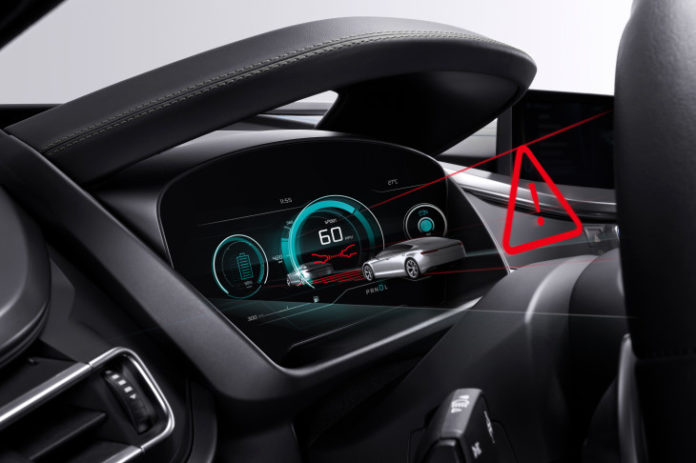
It’s to be expected at an auto show, just as with a fashion show: some rather outlandish concepts added to stir talk, draw cameras and attract a large amount of attention. While this year’s Frankfurt Motor Show was no exception, there was at least as much talk about the next-gen dashboards on display as the vehicles themselves.
The all-electric 2020 Byton M-Byte SUV attracted a great deal of attention, particularly for its dashboard display, which extends nearly the full width of the dashboard, making the dash-mounted system the largest display in any production vehicle, according to the company. The 48-inch curved display functions as both an infotainment hub and a driver information system. In addition, the steering wheel has a built-in seven-inch touchscreen interface, and there is another eight-inch “co-driver tablet.” The driver and passenger can use the interfaces using voice and gesture control options, facial recognition, and physical controls.
The Mercedes-Benz’s Vision EQS’s also attracted attention for its unique display design. While its high-rise center display isn’t quite as ostentatious as the Byton M-Byte, the all-electric Vision EQS does have something unique: secondary displays on the doors. These two smaller screens sit above each door armrest and allow driver and passenger to use their Mercedes Me login to access their personalized settings. The center screen of the EQS can be controlled by a central tablet or by voice control.
Interestingly, some of the vehicles to debut at the Frankfurt show seem to be going in the other direction: pared down displays for drivers who wish to keep a traditional driving experience. (It’s not hard to imagine that more automation inside the cockpit may lead to design backlash aimed at drivers who prefer an “old-fashioned experience” in which they’re alone with their driving skills and the real world.) Audi’s newly debuted AI:Trail has very little by way of digital display, instead continuing to rely on a drivers’ docked mobile phone to serve as the dashboard.
The newest in-car display, however, doesn’t yet have a vehicle. During the show, Bosch announced that it’s in development with a 3D display for use in vehicles. The technology will involve passive 3D technology (so…no awkward 3D glasses required), and will project images in front of the driver, said the company.
“The display’s depth of field means drivers can grasp important visual information faster, whether from an assistance system or a traffic-jam alert,” said Steffen Berns, president of Bosch’s automotive multimedia arm, in a statement. “Alerts that seem to jump out of the display are much more obvious and urgent.”












